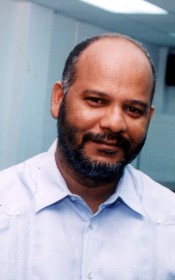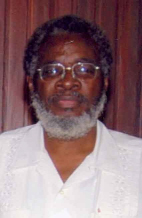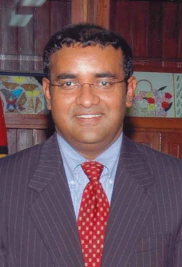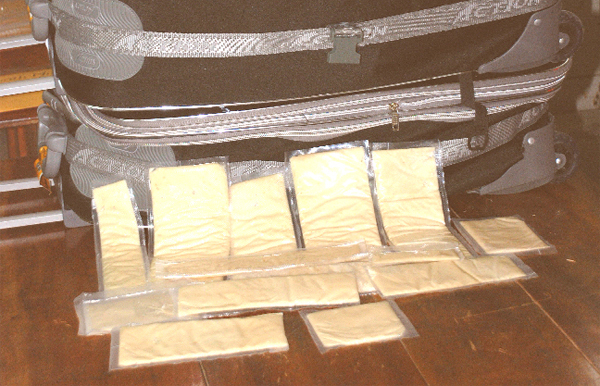The failure of Guyana’s National Drug Strategy Master Plan
Guyana’s National Drug Strategy Master Plan 2005-2009 has expired. Was it a success or failure?
By David A. Granger
The United Nations Office on Drugs and Crime and the Latin America and Caribbean Region of the World Bank issued a damning indictment of the impact of the narcotics trade in their report entitled Crime, Violence and Development: Trends, Costs and Policy Options in the Caribbean in March 2007. The Report argued that narcotics-trafficking has been the insidious force driving the region’s high rates of murder, violence and gun-related crimes.

As narcotics-trafficking ballooned into a big business, the criminal violence associated with it in Guyana has frightened foreign investors, driven away the local educated élite, undermined economic growth, impeded social development and jeopardised human welfare. The United States Embassy previously estimated that narco-traffickers earn US$150 M annually, equivalent to 20 per cent or more of Guyana’s reported GDP.
Such a lucrative trade has had several spinoffs. Traffickers imported illegal weapons and recruited armed men to protect their territory. They encouraged graft by using their wealth to purchase political influence and suborn the security forces in order to protect their investment. Money-launderers associated with narcotics-traffickers also distort the domestic economy by pricing their goods and services below market rates thereby undermining legitimate businesses.

Michael Thomas, a former US Deputy Chief of Mission in Georgetown, stated unambiguously that “It is clear that the drug-trade is pumping huge amounts of money into Guyana’s economy…but it is also pumping huge amounts of violence and corruption into Guyana.” Heeralall Makhanlall, a former Head of the Guyana Police Force’s Criminal Investigation Department – the parent unit of the Police Anti-Narcotics section – warned of the surge in ‘execution-type killings’ which accounted for about one-third of homicides in one year. Many of these are suspected to be related to narco-trafficking.
Apart from criminal violence, social problems such as substance abuse and addiction, insanity, imprisonment, sexually-transmitted diseases, prostitution, vagrancy and ‘wandering’ among girls have become the narcotics trade’s most obvious social consequences.
It was not always like this. When Feroze Mohamed was appointed Minister of Home Affairs nearly eighteen years ago, he inherited a counter-narcotics plan called Guyana’s Strategy for Dealing with the Drug Problem. He found in place, also, a functioning National Drug Law Enforcement Committee which received regular reports from an active Joint Anti-Narcotics Operations Committee. Both the Plan and the Committee had been established since 1988 but were discontinued some time after the change in administration in October 1992.

The new administration launched a second plan – the National Drug Strategy Master Plan, 1997-2000 – and created a new National Anti-Narcotics Commission. The most memorable success of that period was the seizure of the MV Danielsen in Port Georgetown in October 1998. The operation that led to the seizure of the vessel and the discovery of 6,940 pounds of cocaine worth US$288 M indicated that Guyana had already become a significant transhipment platform for narcotics. It ought to have emphasised, also, the importance of collaboration with the US Drug Enforcement Agency in countering the growing transnational menace of narco-trafficking.
During the tenure of Ronald Gajraj as Minister of Home Affairs, however, the new Master Plan never seemed to function. The country experienced a surge in cocaine trafficking and plunged into its most murderous period of drug-gang warfare as the troubles erupted, largely in the East Coast of Demerara, in the wake of the escape of five desperadoes from the Georgetown Prison in February 2002. It was during the troubles that Deputy Head and another agent of the Customs Anti-Narcotics Unit were executed.
It was during the troubles also that Shaheed ‘Roger’ Khan – probably the most notorious narcotics-trafficker in this country’s history – rose to prominence. The United States Drug Enforcement Administration described Khan as being “ultimately able to control the cocaine industry in Guyana, in large part, because he was backed by a paramilitary squad that would murder, threaten, and intimidate others at Khan’s directive. Khan’s enforcers committed violent acts and murders on Khan’s orders that were directly in furtherance of Khan’s drug trafficking conspiracy.”
At the height of the troubles, the administration promulgated a third plan – the National Drug Strategy Master Plan, 2005-2009. President Bharrat Jagdeo, at the Master Plan’s ceremonial launch in June 2005, promised to improve the criminal justice system; strengthen the Chambers of the Director of Public Prosecutions to prosecute narco-traffickers; operationalise the Joint Intelligence Co-ordinating Centre; energise the counter-narcotics agencies and augment border control and the surveillance of our air and sea spaces, among other things.

The Master Plan, which was projected to cost G$650M, had admirable objectives. Its aim was to foster institutional, participatory and democratic approaches to the achievement of a crime-free country founded on social justice, rule of law and respect for authority. Its structure was comprehensive. The chief executive of the strategy’s main organ – the National Anti-Narcotics Co-ordinating Secretariat – however, seems never to have been appointed and the secretariat itself was never made operational. The Plan’s principal arms – the National Anti-Narcotics Commission, chaired by the president himself; the Joint Intelligence Co-ordination Centre; the Joint Anti-Narcotics Committee; and the several Regional Anti-Drugs Units – have not been known to function in the way the Plan dictated.
The Plan, admittedly, was built on pre-existent procedures and structures such as the Customs and Police anti-narcotics units and the Regional Intelligence Committees. Much of the architecture – a coordinating secretariat, joint centres and regional units – needed to form the framework for the entire strategy does not appear to have been erected five years after the Master Plan was promulgated.
The United States Department of State’s Bureau of International Narcotics and Law Enforcement Affairs, through its annual International Narcotics Control Strategy Report, has been a source of objective examination of Guyana’s Master Plan in particular and its counter-narcotics efforts in general.
It has become customary for the Report to start with the familiar axiom: “Guyana is a transit point for cocaine destined for North America, Europe, and the Caribbean.” The Report has pointed out almost annually over the past five years that the government of Guyana had yet to implement important initiatives of its Master Plan. The basic criticism was that there was little productive interaction or intelligence-sharing and the Joint Intelligence Coordination Centre was “not currently operational.” In last year’s International Narcotics Control Strategy Report − the US Department of State noted, “In the penultimate year of its National Drug Strategy Master Plan for 2005-2009, the Government of Guyana has achieved few of the Plan’s original goals. Minimal cooperation among law enforcement bodies, weak border controls, and limited resources for law enforcement… allowed drug traffickers to move shipments via river, air, and land without meaningful resistance.”
It is an open secret that counter-narcotics cooperation between the USA and Guyana governments has cooled. One difficulty has been over the establishment of a permanent office of the US Drug Enforcement Administration in Guyana. This topic has been in the air for more than a decade. Despite verbal assurances by Head of the Presidential Secretariat Dr Roger Luncheon that the establishment of a DEA office in Guyana would be welcomed, he insisted that “certain details” had to be discussed beforehand. The result has been that the office never opened.
The Port of Spain-based bureau of the United States Drug Enforcement Agency continued to work cordially with the administration and law enforcement agencies on counter-narcotics initiatives although it saw through the charade. It threatened, however, that it “will not augment resources for investigation and interdiction in Guyana. Instead, it will continue to channel any future assistance to initiatives that demonstrate success in treating substance abusers.”
More pointedly, Mr Roland Bullen, a former US Ambassador had warned: “There is plenty of room for improvement in fighting narco-crime in Guyana. We have dedicated many resources to this fight. For my government to invest more, it will need to see a greater return. Resources are success-driven and it is demoralizing to see drug shipments originating in Guyana, seized abroad, while narco-criminals roam freely here.”
The ultimate test of the Master Plan’s efficacy has been the failure to bring suspected narco-traffickers to justice and stop the importation of illegal narcotics into the country. President Bharrat Jagdeo, told the Guyana Police Force’s Annual Officers Conference earlier this year that, while there have been “some successes against the bigger drug lords,” he had not seen enough effort by the Force in tackling the drug houses. He confided, “We know them − the ones that sell drugs in our communities − we know them; they are there. We need to go after them aggressively because these are the ones who are peddling the deaths in our communities… They are responsible for all the addicts that are living in our country and are keeping the drug trade alive.”
It is public knowledge, however, that successes in the prosecution of “the bigger drug lords” were achieved only by law enforcement agencies outside of this jurisdiction. Guyanese Peter Morgan was sentenced for drug-trafficking in the USA. David Narine, another Guyanese, was sentenced for drug-trafficking, also in the USA. David Clarke a former Guyana Defence Force officer was sentenced for drug-trafficking in the USA. Guyana’s mastermind Shaheed ‘Roger Khan’ was sentenced for drug-trafficking in the USA. Six Guyanese – Rohan Shastri Rambarran, Lemme Michael Campbell, Somwattie Persaud, Wayne Gavin Green, Christopher Bacchus and Dianne Bacchus – were all convicted for drug-trafficking last year in Barbados.
Elsewhere in the country, illegal narcotics enter by the planeload. The most-recently constructed narco-aerodrome was discovered at Wanatoba on the Corentyne. Located 130 km upriver from Orealla on the Corentyne River, the illegal airstrip was 1,100 m long and 35 m wide. The Let 410 UVP-E turboprop aeroplane which was found partially burnt on the illegal strip has a payload 1,615 kg and a range of over 1,300 km.
A 1,200 m illegal airstrip was ‘discovered’ within the Guyana Defence Force’s training area at Tacama in Berbice back in February 1989. Three Colombians were arrested and ammunition, weapons, water pumps electrical generators transmitting sets and aircraft engines were found. Aircraft dropped 20 cartons of cocaine at Loo Lands, on the Demerara River, in June 1993. There were more arrests. A burnt-out aircraft was ‘discovered’ on the airstrip at Bartica in December 1998. Another burnt-out aircraft was ‘discovered’ at Mabura Hill in July 2000. An abandoned aircraft was ‘discovered’ at Kwapau airstrip in March 2005. The aircraft in all of these cases were suspected of having brought cocaine into the country.
The administration has promulgated two counter narcotics master plans. It has signed the appropriate international conventions such as the UN Convention Against Illicit Traffic in Narcotic Drugs and Psychotropic Substances. But it has failed to appoint appropriate personnel, provide adequate resources or enforce the relevant legislation it passed to give effect to its Master Plan.
The President has said “I think we are doing the best we could in terms of combatting the trade…If we had more resources… we may be able to better patrol our waters; if we had more resources, we may be able to have radar coverage over our whole country and, maybe, be able to fly and police all of our borders. But we cannot do those things. But the little resources we have, we are deploying it as best as we could.”
The Minister of Home Affairs has conducted a review of Guyana’s National Drug Strategy Master Plan in which he claims that relevant stakeholders at the technical level were involved. He reported that “The Task Force thus concluded that 92 per cent of the programmes under the Master Plan has been implemented. In the final analysis, it will be for the public to judge whether Guyana’s National Drug Strategy Master Plan, 2005-2009 has succeeded in the achievement of “a crime-free country founded on social justice, rule of law and respect for authority.”

